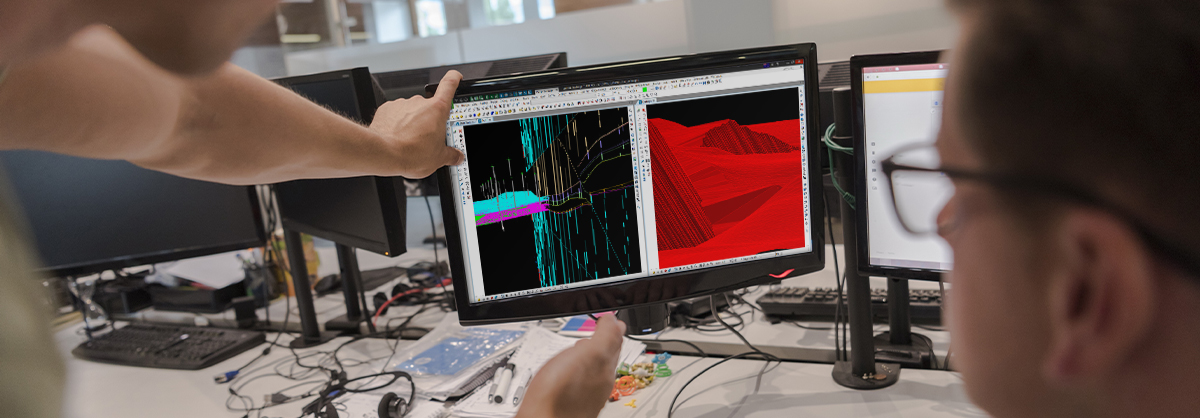Human-agent collectives – Leveraging a new relationship between humans and computers

Mining companies must leverage a new relationship between humans and computers. Maptek Leader of Strategic Innovation, Chris Green discusses the benefits.
Management is aware that people throughout organisations are energetically pursuing new techniques and technologies within their specific domains of expertise. But does it add up to a strategy that will continue to contribute to an environment where savings are becoming harder to attain and where quality and productivity are always under pressure to improve?
Innovative mining leaders are increasingly looking to advanced technologies related to artificial intelligence (AI) for answers. Indeed, the field of AI and machine learning is slowly beginning to reshape the mining sector, in planning and operations. Maptek has become an established leader in this area.
It is not just about adopting the latest technologies. Real success comes by developing an organisational culture that interleaves humans and computers in profoundly new ways.
A leading computer scientist, Nicholas Jennings argues that it’s time for a fundamentally new strategy in the symbiotic relationship between humans and computers. He believes that centralised control is no longer possible. The volume, variety and pace of information and services has become too great.
Jennings has been key to the development of the science of Human-Agent Collectives (HACs) in which humans and software agents collaborate in a seamless manner. He says that to date, the focus has been on systems where all the agents are either software or hardware. Jennings sees that ‘it is both necessary and beneficial to involve humans, working as active information gatherers and information processors, in concert with autonomous software agents’.
This has implications for mining companies, which have a vast array of resources including thousands of employees. Operations need management but paradoxically management also needs the ability to run autonomously. Via HAC, mines can discover emergent behaviour by themselves – the behaviour of a system that does not depend on its individual parts but on their relationships.
Real-time optimisation of the mine with grade control, short-term scheduling and reconciliation needs management to analyse data and react against destructive patterns and established procedures, and potentially create positive emergent ways of solving problems and developing new techniques.
Dated linear techniques for data analysis need to be replaced by agents with non-linear approaches to problem solving, using advanced deep learning techniques.
An example of enhanced human–computer learning is digital twinning. A virtual model is fed real-time data from the field; scenarios can be quickly tested, and operations and production can be optimised. Pre-testing decisions on people and assets in a replica system leads to better outcomes.
For mining companies, HAC can reveal three opportunities hiding in plain sight. First, a growing history to allow a mine to learn about itself. Second, intelligent agents trawling through all live operational and stored historical data looking for variations and opportunities. Third, collaborative negotiation among and between agents and humans.

HACs promise mining companies, small and large, improvements in yields, speed and efficiency. What would it take to make a big impact? Maptek argues that the various elements of HAC require us to:
- Understand how to provide flexible autonomy that allows agents to sometimes take actions in a completely autonomous way without reference to humans, while at other times being guided by much closer human involvement.
- Discover the means by which groups of agents and humans can exhibit agile teaming and come together on an ad hoc basis to achieve joint goals, disbanding once the cooperative action has been successful.
- Elaborate the principles of incentive engineering in which rewards are designed so that the actions the participants take are encouraged to generate socially desirable outcomes.
- Design an accountable information infrastructure that allows the veracity and accuracy of seamlessly blended human and agent decisions, sensor data and crowd generated content to be confirmed and audited.
While these are not entirely new areas, the HAC system context introduces additional complexity and brings new elements to the fore. It’s hard to say how this approach is going to change us over the next decade. But mining companies will need to embrace these changes to survive in this extremely competitive environment.




